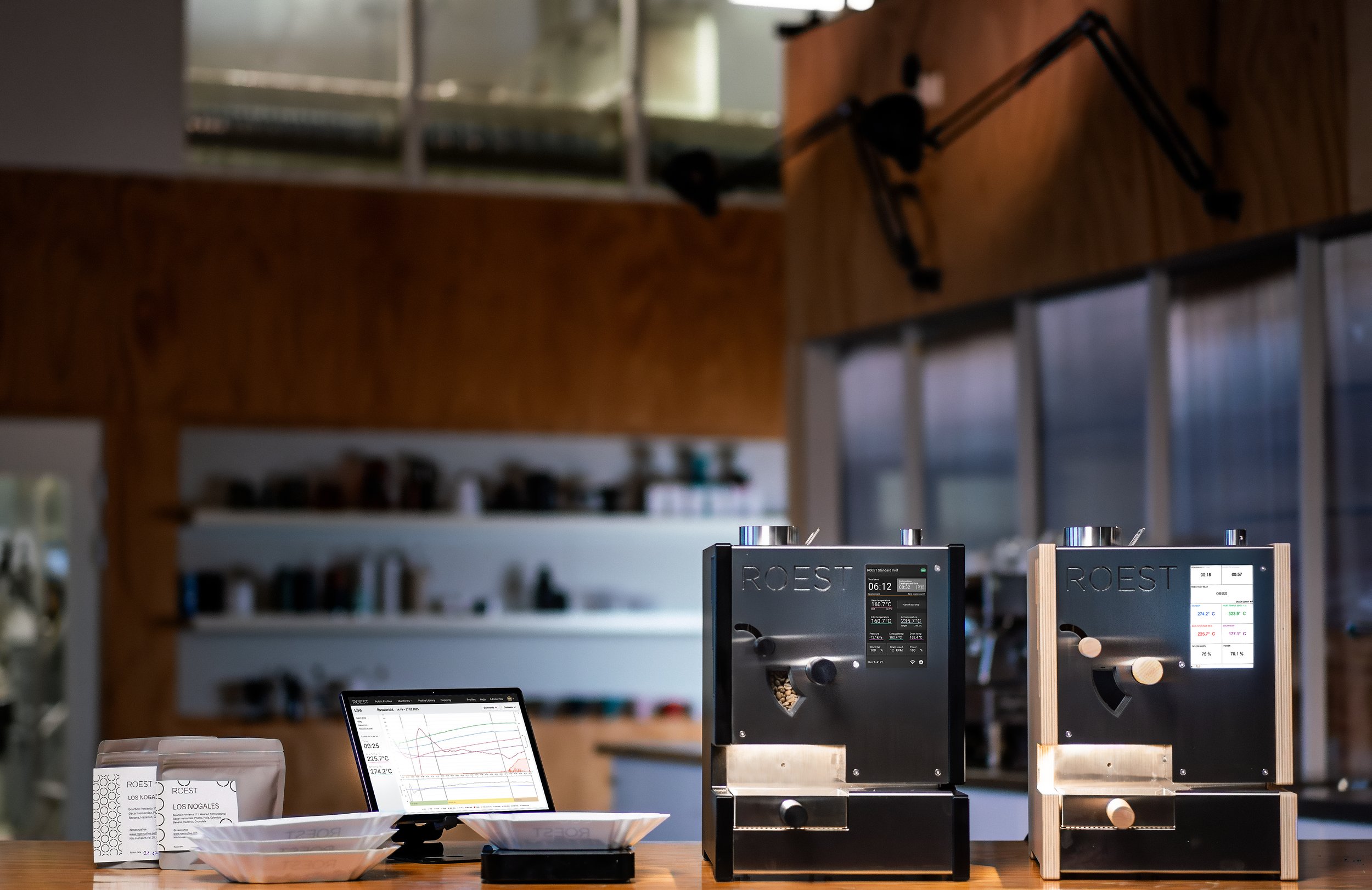
Learn about ROEST products, customers and more
ROEST BLOG
S200 & L200 Series: The New Generation of ROEST Sample Roasters
Discover the ROEST S200 & L200 Series—the new generation of ROEST coffee sample roasters with touchscreen control, counterflow mode, and ROEST Connect software for precision roasting.
Why Cafe Imports Switched to ROEST for Sample Roasting
Café Imports, one of the world’s leading green coffee importers, now uses ROEST sample roasters in all their global labs. Discover why precision, consistency, and efficiency won them over.
Mastering the Art of Coffee Roasting: Rate of Rise
Behind every exceptional cup of coffee lies a meticulous process of roasting. Paying attention to details during the roasting process is paramount. One crucial parameter to control and achieve optimal results is the Rate of Rise (RoR). In this article, we will explore the concept of RoR, its significance in coffee roasting, how to calculate it, and its relevance at different stages of the process.
Introducing a new feature: Inlet Temperature Sensor
After interesting discussions with Scott Rao and Luca Costanzo, we revisited the idea of implementing an Inlet temperature sensor based on the new inlet temperature sensors we have developed for P2000. The inlet temperature sensor is a prominent feature in the roasting community and several roasters worldwide use it. It is a great addition and improvement to the way you operate the ROEST.
Interview with Katja Klein - Founder of Kontext Coffee Company
This week we had a chat with our fellow ROEST friend, Katja Klein, the founder and head roaster of Kontext Coffee Company.
Design to Repair: Sustainability at ROEST
Sustainability is one of the most important values for our coffee community. As we are growing, we feel a responsibility to focus more attention on what sustainability means to us and how we can contribute as a manufacturer. At ROEST, we are focused on creating a sustainable product for our customers, while building a sustainable business for our team.
Why you need a sample roaster for your coffee business
Are you thinking about getting into the coffee roasting business? Or maybe you have already started, and you keep browsing the right equipment for your roastery? If you are not sure whether a sample roaster is an important asset to purchase, keep reading.
Learning to ROEST with Long Miles Coffee Part 2
David Stallings from Long Miles Coffee shares the full and detailed report on developing profile for Long Miles Burundi samples. Interesting explanation of the transformation from Air Temperature profile into Power profile. Profiles for your ROEST are included.
Roasting whiskey barrel-aged coffee - from sample to sales
Green coffee industry is improving and developing new techniques in order to bring to our customers new flavor experiences. Is your coffee roasting improving along? Roasters are constantly facing new challenges with a trend of experimental approach to processing. Have you ever tried roasting coffee sample that was soaked in whiskey oak barrels?
The voice of coffee
Introducing a new feature: FIRST CRACK DETECTION. It turns your coffee roaster in to fully automatic roaster delivering higher consistency between your roasts. It registers the first crack for you and finishes the roast without any assistance.












